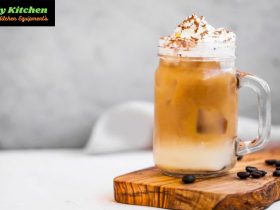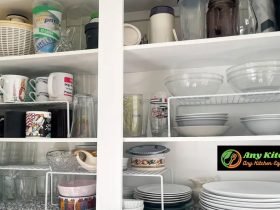When it comes to kitchen appliances, versatility is key. A common question that arises is, “Can you use a food processor as a blender?” While food processors and blenders share some similarities, they are distinct tools designed for different purposes. In this article, we will explore the capabilities and limitations of food processors in relation to blending, and discuss when it’s suitable to use a food processor as a blender alternative.
What is the Difference Between a Food Processor and a Blender?
Food processors and blenders are both essential kitchen appliances, but they serve different purposes. A food processor is designed for tasks like chopping, slicing, grating, and kneading dough. It excels at handling solid foods and has various attachments for different functions. On the other hand, a blender is primarily used for liquefying ingredients and creating smooth textures. It is ideal for making smoothies, purees, soups, and sauces. Blenders have powerful motors and specialized blades that can crush ice and blend fruits and vegetables into a consistent liquid. While there may be some overlap in functionality, understanding the differences between these appliances can help determine the most suitable tool for your specific culinary needs.
What is a Food Processor?
A food processor is a versatile kitchen appliance designed to assist with various food preparation tasks. It consists of a motorized base that powers a bowl with a removable blade and various attachments. Food processors excel at chopping, slicing, grating, shredding, and kneading dough. They are capable of handling solid foods like vegetables, fruits, nuts, and meat. Some models also come with additional features such as citrus juicers or mini choppers. With different speed settings and interchangeable blades, food processors offer flexibility and convenience in the kitchen, making tasks like meal prepping, dough making, and ingredient processing more efficient and time-saving.
What is Food Blender?
A food blender, commonly known as a blender, is a popular kitchen appliance designed to blend and liquefy ingredients. It consists of a motorized base attached to a container with a rotating blade assembly at the bottom. Blenders are primarily used for creating smooth textures and blending ingredients together. They are commonly used to make smoothies, shakes, sauces, soups, purees, and salad dressings. With their powerful motors and sharp blades, blenders can effectively crush ice, pulverize fruits and vegetables, and create consistent blends. Some blenders also come with additional features like variable speed settings, pulse functions, and pre-programmed settings for specific tasks. Blenders are a convenient tool for creating quick and delicious recipes, making them a staple in many kitchens.
How Does a Food Processor Work?
A food processor operates through a simple yet efficient mechanism. The appliance consists of a motorized base that powers the processing bowl. The user places the desired ingredients into the bowl and secures the lid. When activated, the motor spins the blade or disc attachment, depending on the chosen function. The rotating blade or disc slices, chops, grates, shreds, or mixes the ingredients as per the selected setting. The bowl’s design ensures that the ingredients remain contained during processing. The user can control the speed and duration of processing based on the recipe requirements. This allows for precise and efficient food preparation, saving time and effort in the kitchen.
How Does a Blender Work?
A blender is a kitchen appliance that works by combining a motorized base and a container with rotating blades. When the blender is turned on, the motor generates power, which transfers to the blades. The blades spin rapidly, creating a vortex inside the container. As a result, the ingredients placed in the container are pulled toward the blades and blended together. The high-speed rotation of the blades breaks down solid ingredients, such as fruits, vegetables, or ice, into a smooth and consistent mixture. Blenders also often have different speed settings or pre-programmed functions to accommodate various blending needs, such as pulsing or crushing ice. Overall, blenders provide a convenient and efficient way to liquefy and combine ingredients for various recipes.
Which is better a blender or a food processor?
Determining whether a blender or a food processor is better depends on your specific needs and intended uses in the kitchen. Both appliances have distinct features that make them valuable tools in different scenarios.
Blenders excel at creating smooth textures and blending liquids. They are ideal for making smoothies, shakes, soups, purees, and sauces. Blenders have powerful motors and specialized blades that can effectively crush ice and blend fruits and vegetables into a consistent liquid. They are especially useful when working with liquid-based recipes and achieving a homogeneous texture.

Food processors, on the other hand, offer versatility and excel at handling solid foods and a wider range of tasks. They are designed for chopping, slicing, grating, shredding, and kneading dough. Food processors are great for tasks like chopping vegetables, making dough, grinding nuts, and preparing large quantities of ingredients. They often come with various attachments and blade options, allowing for more customization.
Ultimately, the choice between a blender and a food processor depends on your cooking and blending needs. If you primarily work with liquids and desire smooth textures, a blender is the better option. If you require more versatility, handle solid foods frequently, or need specific functions like dough kneading, a food processor would be more suitable. Some individuals find value in owning both appliances to enjoy the benefits of each based on their culinary requirements.
Do I Need a Blender If I Have a Food Processor?
The variety of duties you usually carry out in your kitchen will determine this. It is great to have both if you frequently make smoothies and prefer a quick method for chopping and slicing fruits and vegetables, mixing ingredients, and kneading dough. They are available independently or as part of a blender/food processor combo.
A food processor and blender are two separate kitchen appliances that work together. It includes many mixing and blade attachments in addition to a pitcher for blending and a bowl for food preparation.
The pitcher and bowl have the same base by design. In this manner, you may switch out the accessories as necessary for different food processing tasks, such as chopping, slicing, preparing smoothies, purees, sweets, sauces, and baby food, as well as kneading dough, combining ingredients, and whisking them.
Generally speaking, purchasing a blender and food processor together is less expensive than doing it individually. It will serve you for many years as long as you take the proper steps to choose a good and trustworthy one.
What are the pros and cons of using a blender as a food processor?
Using a blender as a food processor can have its advantages and disadvantages. Here are some pros and cons to consider:
Pros
Versatility: Blenders can handle a variety of tasks such as pureeing, blending liquids, and crushing ice. They can be used for making smoothies, soups, sauces, and even grinding certain ingredients like nuts or spices.
Space and Cost: If you already have a blender, using it as a substitute for a food processor can save you space in the kitchen and the expense of purchasing an additional appliance.
Cons
Texture and Consistency: Blenders are designed to create smooth textures, which may not be suitable for tasks like chopping or shredding. The results may not be as precise or uniform as with a dedicated food processor.
Capacity and Control: Blenders often have smaller capacities compared to food processors, limiting the number of ingredients you can process at once. Additionally, blenders may not offer the same level of control over processing speeds or have specific attachments for different tasks.
Blade Design: Blender blades are typically designed for blending and may not be as effective for tasks like slicing or grating. The blade shape and arrangement may not yield the desired results for certain food processing tasks.
While using a blender as a food processor can be a convenient option for simple tasks or occasional use, it may not deliver the same precision, capacity, or versatility as a dedicated food processor. If you regularly require functions like slicing, grating or shredding, investing in a separate food processor would likely be more suitable.
Conclusion
In conclusion, while it is possible to use a food processor as a blender, it is not the most ideal choice. Food processors and blenders are designed for different purposes, with distinct features and functionalities. Food processors excel at tasks like chopping, slicing, grating, and kneading dough, while blenders are specifically designed for blending and creating smooth textures. While a food processor may be able to blend certain ingredients, the results may be inconsistent and not as smooth as those achieved with a dedicated blender. For optimal blending performance, it is recommended to use a blender specifically designed for that purpose.
Frequently Asked Questions
How do you blend in a food processor?
To blend in a food processor, add the ingredients you want to blend into the processor bowl. Attach the lid securely, and select the appropriate blade or attachment for blending. Start the food processor and process the ingredients until they reach the desired consistency, pausing and scraping down the sides of the bowl as needed.
What can I use if I don’t have a blender?
If you don’t have a blender, there are several alternatives you can use for blending ingredients. A handheld immersion blender can be a handy option. Additionally, you can use a food processor, a mortar and pestle, or a manual hand whisk. For small quantities, vigorously shaking ingredients in a sealed jar or mashing them with a fork can also serve as makeshift blending methods.
Can you make juice in a food processor?
While it is possible to make juice in a food processor, it may not produce the desired results compared to using a juicer or blender. A food processor is not designed to extract juice efficiently from fruits and vegetables. It may not fully break down the fibers and might yield a pulpier consistency. For optimal juice extraction, it is recommended to use a juicer specifically designed for that purpose.
Can a food processor blend ice?
It’s simple to throw some cubes in a blender or food processor and pulse until crushed if your ice maker doesn’t offer crushed ice.










Leave a Reply